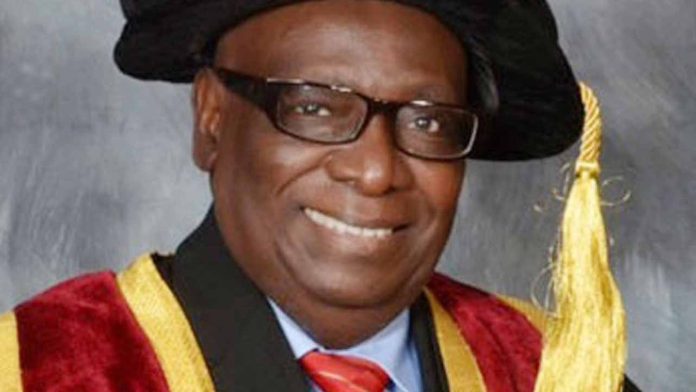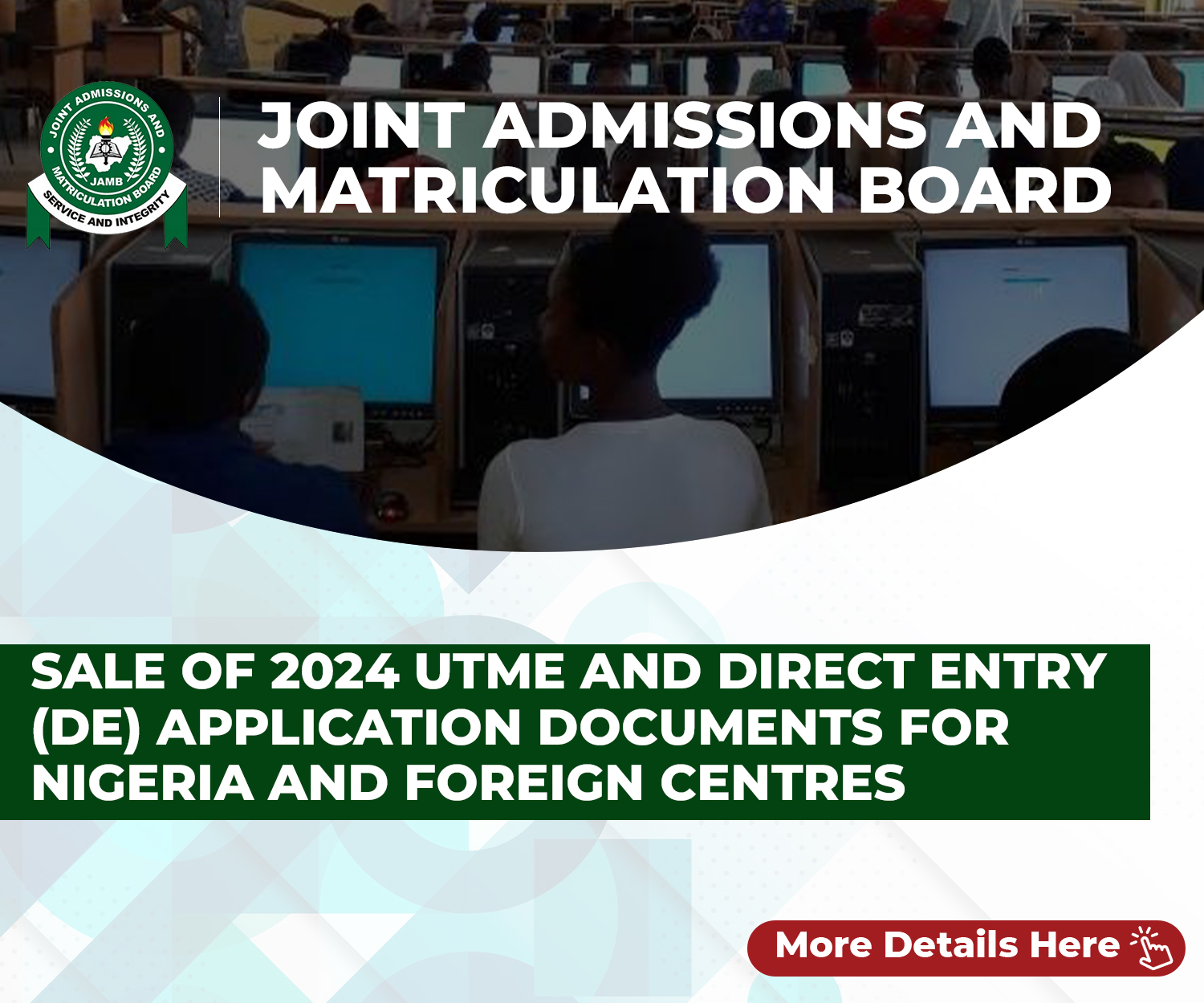Book Review:
A Practical Approach To Contemporary Tertiary Education Management In Nigeria
Edited by Tolu Odugbemi and Taiwo F. Ipaye
Published by University of Lagos Press and Bookshop in 2023
Publication of nineteen chapters with a Foreword by Dr. Daniel K. Olukoya, Professor of Biotechnology and Chancellor, Mountain Top University and
The General Overseer of Mountain of Fire and Miracles Ministries (MFM)
General Introduction
It is often said that you cannot, or rather, should not judge a book by its cover. This may not be true in this case as you can indeed draw some inferences from the cover of this publication being reviewed. First it is edited by two distinguished personalities, a former two-time Vice-Chancellor (University of Lagos and Ondo State University of Science and Technology) and an innovative change agent former Registrar of the University of Lagos. The publication also has a pile of books rising to the sky and two characters with symbolic features of thinking and a laptop for inputing their thoughts!
Contributors
The array of contributors, from federal, state and private institutions outside Nigeria gives credence to the wide net cast in attracting the contributors. These comprise present and former Vice-Chancellors, Deans and Directors of Academic Planning, Professors of Marketing, Paediatrics, Pathology and Library and Information Science. Others include Deputy Registrars, Auditors as well as Presidents of NGOs as well as a Media practitioner. All bring in different perspectives and add to the richness of the publication.
Chapter Breakdown
Chapter 1 – Connecting the Classroom to Reality: Making Tertiary Education Functional By Wuraola Ajibade
Chapter 1 of A Practical Approach to Contemporary Tertiary Education Management in Nigeria written by Wuraola Ajibade, offers a critical examination of the existing educational system in Nigeria, particularly in the context of colonial legacies and their impact on contemporary education. Ajibade begins by questioning the relevance and applicability of tertiary education as it is currently structured, drawing on personal experiences from her Pharmaceutical Chemistry studies. She highlights the disconnect between academic learning and practical application, urging a reevaluation of educational paradigms.
The chapter delves deeply into the historical impact of colonization on African education, emphasizing how colonial powers systematically devalued indigenous knowledge systems and imposed their own educational structures. Ajibade argues that this legacy has led to a disparity in educational quality and access, particularly between former British and French colonies. She also touches on the cultural and linguistic implications of this historical context, demonstrating how it has shaped educational policies and practices in modern-day Nigeria.
Furthermore, Ajibade critiques the current state of tertiary education, noting deficiencies in research opportunities, practical applications of knowledge, and the overemphasis on rote learning. She suggests that a more holistic approach, incorporating indigenous knowledge systems and practical skills, is necessary for a truly functional educational system. The chapter concludes with a call for a transformative shift in pedagogy and curriculum, emphasizing the importance of reconnecting education with real-world applications and indigenous cultural values. This, Ajibade posits is essential for nurturing critical thinking and innovation in students, ultimately leading to more effective and relevant tertiary education in Nigeria.
Chapter 2 – Leveraging the Changing Work Culture to Drive Innovation in Service Delivery in University Administration in a Post-Covid-19 Era: The UNILAG Experience By Taiwo F. Ipaye
Chapter 2 of A Practical Approach to Contemporary Tertiary Education Management in Nigeria written by Taiwo Ipaye, provides a comprehensive examination of the evolving role of university administration in the wake of the COVID-19 pandemic, focusing particularly on the University of Lagos (UNILAG) experience. Ipaye discusses how universities, traditionally centered on teaching, research, and community service, have undergone significant transformations in administrative roles and responsibilities due to technological advancements and the pandemic’s impact.
The chapter emphasizes the critical role of administrators in supporting academic activities and highlights the shift in administrative tasks with the integration of technology. Ipaye points out the expansion of university administration beyond traditional roles, incorporating advanced IT support and data management, essential in today’s digital age. This expansion reflects a response to the growing student population and diversification of academic programs.
Significantly, the chapter addresses the challenges and adaptations necessitated by COVID-19, particularly the shift to online learning and remote work. Ipaye underscores the importance of artificial intelligence in managing student records, facilitating virtual meetings, and streamlining administrative processes. The pandemic’s impact led to innovations in student learning, record management, and human resource functions, showcasing the resilience and adaptability of the university system.
In conclusion, Ipaye stresses the need for continuous innovation and adaptation in university administration to remain relevant and effective in the 21st century. The chapter calls for an inclusive approach, leveraging technology to enhance service delivery and meet the evolving needs of the university community. The insights provided in this chapter are valuable for understanding the changing dynamics of university administration in the context of global challenges and technological advancements.
Chapter 3 – In Times Like This: Context and Creativity in a Post COVID-19 Economy By Femi Odugbemi
“In Times Like This: Context and Creativity in a Post COVID-19 Economy” written by Femi Odugbemi explores the profound changes in the global economy and workplace brought about by the COVID-19 pandemic, focusing on the need for creativity and adaptability in a post-pandemic world. Odugbemi emphasizes the transformative potential of this period, urging a reevaluation of existing systems and advocating for innovation and storytelling as pivotal skills in the evolving marketplace.
The author’s argument revolves around the idea that the pandemic serves as a reset button, providing an opportunity for rethinking and reinventing various aspects of life and work. Odugbemi effectively supports his claims by discussing the shift towards flexible work arrangements, the rising importance of technology, and the need for personalization in solutions. He stresses that success in the future economy will require more than just technical skills; it will demand imagination, innovation, and the ability to craft compelling narratives.
While the chapter offers insightful observations about the changing nature of work and the significance of storytelling, it falls short in providing concrete examples or empirical data to substantiate some of its broader claims. The discussion is largely theoretical and would benefit from more specific case studies or research findings to illustrate the points made.
In conclusion, Odugbemi’s chapter contributes valuable perspectives on adapting to the post-COVID-19 economic landscape, highlighting the need for creativity, technological proficiency, and storytelling in shaping future work environments. Although the chapter offers novel insights, its impact is slightly diminished by a lack of detailed evidence and practical examples. Nevertheless, it serves as a thought-provoking call for a reimagined approach to work and education, aligning with the book’s overarching theme of contemporary educational management in Nigeria.
Chapter 4 – Selection Processes and Appointments in Tertiary Institutions in Nigeria By Bolarinwa Arowosegbe
“Selection Processes and Appointments in Tertiary Institutions in Nigeria” authored by Bolarinwa Arowosegbe, delves into the intricacies of selection processes and appointments within Nigerian tertiary institutions. Arowosegbe emphasizes the critical importance of meticulous selection procedures to ensure the engagement of the most qualified candidates in academic, administrative, and technical roles.
The chapter presents a comprehensive overview of the recruitment and selection processes in Nigerian universities. It outlines the stages from manpower planning to final appointments, emphasizing the need for transparency and objectivity. The author supports his claims with references to established HR theories and practices, offering a blend of theoretical frameworks and practical insights.
Arowosegbe’s argument is coherent and well-structured, highlighting the significant impact of effective human resource management on institutional productivity. However, the chapter could be strengthened by incorporating more empirical data or case studies specific to Nigerian universities to support the assertions made. The inclusion of such data would provide a more robust analysis of the effectiveness of these selection processes in the Nigerian context.
In conclusion, the chapter makes a valuable contribution to the field of educational management by shedding light on the complexities of staff recruitment in tertiary institutions. It underscores the importance of fair and merit-based selection processes in fostering institutional excellence. While the chapter is informative, its reliance on theoretical models without substantial localized data slightly limits its applicability to the Nigerian university system. Nonetheless, it offers significant insights into human resource practices in the context of Nigerian higher education.
Chapter 5 – University Education in Nigeria: Prospects and Challenges from Private Universities By Elijah Adebowale Ayolabi
Chapter 5 focuses on the evolving landscape of university education in Nigeria, particularly highlighting the role and impact of private universities. Ayolabi discusses the challenges and prospects of private universities and their influence on the larger educational system.
The chapter provides a thorough analysis of the challenges facing Nigerian tertiary institutions, including funding issues, staff shortages, infrastructure deficiencies, and academic corruption. Ayolabi effectively supports his arguments with relevant data and references, presenting a clear and coherent picture of the current state of university education in Nigeria. He also addresses the rise of private universities in response to these challenges, exploring their potential to enhance the quality and accessibility of higher education.
While the chapter offers valuable insights into the dynamics of private universities in Nigeria, it tends to focus more on describing the problems rather than offering detailed solutions or innovative approaches to address these challenges. The contribution of the chapter to its field is significant, providing a comprehensive overview.
Chapter 6 – Issues in Tertiary Education in Nigeria By Ibiyemi Ibilola Olatunji-Bello and Lateef Salami
Chapter 6 offers a comprehensive examination of the various challenges facing tertiary education in Nigeria. The authors delve into critical issues such as inadequate funding, incessant strikes, brain drain, and the impact of globalisation on higher education.
The chapter is well-structured and presents a coherent argument, highlighting the complexities of managing tertiary education in Nigeria. The authors support their claims with relevant data and references, providing a detailed analysis of the current state of Nigeria’s higher education system. However, the chapter could benefit from a more in-depth exploration of potential solutions to these challenges, as well as a discussion on the implementation of these solutions.
One of the chapter’s strengths is its thorough examination of the systemic issues plaguing Nigerian tertiary education, providing valuable insights into the sector’s shortcomings. Yet, it lacks a forward-looking perspective that addresses how these issues can be effectively tackled to improve the quality of higher education in Nigeria.
In conclusion, Olatunji-Bello and Salami’s chapter makes a significant contribution to the understanding of the challenges in Nigerian tertiary education. While it effectively diagnoses the problems, it falls short in proposing detailed, actionable solutions. Nevertheless, it offers a critical perspective on the state of higher education in Nigeria, making it a valuable resource for policymakers, educators, and stakeholders in the educational sector.
Chapter 7 – Essential Components to Consider When Setting Up a Medical School: Checklists and Experiences By Fatima Kyari
Fatima Kyari presents a detailed guide on establishing a medical school in Nigeria. The chapter thoroughly explores the essential components required for setting up a successful medical institution, including forming an establishment team, setting a vision and mission, conducting needs assessment, securing funding, and fulfilling approval and accreditation requirements.
Kyari’s argument is well-structured and coherent, methodically addressing each critical step in the process of establishing a medical school. The use of specific guidelines from regulatory bodies like the National Universities Commission (NUC) and the Medical and Dental Council of Nigeria (MDCN) lends credibility and practicality to her recommendations. However, the chapter primarily focuses on the procedural and regulatory aspects of setting up a medical school, with less emphasis on innovative educational methodologies and contemporary challenges in medical education.
In conclusion, the chapter is a significant contribution to the field of medical education in Nigeria, offering a comprehensive checklist for establishing medical schools. Its strength lies in its detailed guidelines and adherence to regulatory standards, making it a valuable resource for educational planners and policymakers. However, integrating more innovative educational strategies and addressing current challenges in medical training could further enhance its relevance and applicability.
Chapter 8 – Concepts on Simulation-Based Teaching: Experience for Clinical Education in Nigeria By Rachel A. Umoren and Chinyere Ezeaka
Rachel A. Umoren and Chinyere Ezeaka delve into the application and potential of simulation-based teaching in Nigerian clinical education. The authors offer a historical perspective on simulation in medical training, emphasize its importance in modern medical curricula, and discuss the specific context and challenges of implementing such methods in Nigeria.
The chapter’s strength lies in its comprehensive historical context and detailed analysis of the role of simulation in enhancing medical education. The authors successfully demonstrate how simulation-based training can address gaps in traditional medical education, particularly in a resource-constrained environment like Nigeria. Their argument is well-supported by references to historical developments, current practices, and examples of simulation use in medical education globally.
However, the chapter could benefit from more specific examples or case studies demonstrating the implementation and impact of simulation-based teaching in Nigerian medical schools. While the theoretical basis and potential benefits are well articulated, more practical insights into actual applications within Nigeria would enhance the chapter’s relevance and utility for educators and policymakers.
In conclusion, this chapter makes a significant contribution to the field of medical education, particularly in the context of emerging technologies and methodologies in teaching. It highlights the critical need for innovative teaching approaches like simulation in countries facing resource constraints and provides a thorough foundation for further exploration and implementation in this area.
Chapter 9 – Strategic Marketing Plan to Enhance Tertiary Education Institutions in Nigeria for Patronage by Other Countries By Bolajoko Nkemdinim Dixon-Ogbechi
Chapter 9 of A Practical Approach to Contemporary Tertiary Education Management in Nigeria written by Bolajoko Nkemdinim Dixon-Ogbechi, focuses on a strategic marketing plan to enhance the global appeal and patronage of tertiary educational institutions in Nigeria. The chapter meticulously outlines the stages involved in developing a strategic marketing plan, emphasizing the need for such institutions to position themselves effectively in the competitive global educational market. The author underpins the arguments with a detailed explanation of the marketing mix elements (Product, Price, Place, Promotion, People, Process, and Physical Evidence) and how they can be strategically deployed.
One of the chapter’s key strengths is its comprehensive approach, systematically breaking down each stage of creating a strategic marketing plan. This provides a clear, practical roadmap for educational institutions aiming to increase their international presence. However, a weakness is the lack of specific case studies or examples from Nigerian institutions that have successfully implemented such strategies. The inclusion of real-world examples would have strengthened the argument by providing practical evidence of the plan’s effectiveness.
In conclusion, the chapter makes a significant contribution to the field of educational marketing, particularly in the context of developing countries. It presents valuable insights into how Nigerian tertiary institutions can leverage strategic marketing to enhance their global competitiveness. The structured approach and detailed exploration of marketing principles make it a useful guide for educational administrators and marketers in the sector.
Chapter 10 – Financing Tertiary Education in Nigeria: Comparing Nigeria to the UK, Canada, and the USA By Maria Gbemi Akinmaye
Chapter 10 of A Practical Approach to Contemporary Tertiary Education Management in Nigeria written by Maria Gbemi Akinmaye, delves into the critical issue of financing tertiary education in Nigeria by comparing it with the systems in the UK, Canada, and the USA. The chapter extensively discusses various funding sources, the challenges faced due to inadequate funding, and the resultant impact on the quality of education and infrastructure in Nigerian tertiary institutions.
Akinmaye’s analysis is well-supported with data and references to policy documents, offering a comprehensive view of the funding landscape. The chapter excels in highlighting the stark contrast between Nigeria’s reliance on government funding and the more diversified funding models in the compared countries. However, the chapter could have benefited from a more detailed analysis of how these different funding models directly impact the quality of education and research outputs in these regions.
The major contribution of this work lies in its comparative approach, shedding light on global practices that could potentially be adapted to the Nigerian context. While it does not necessarily present groundbreaking new insights, it effectively synthesizes existing knowledge and compares various funding models, providing a clear understanding of the complexities involved in financing higher education.
In conclusion, the chapter is a valuable resource for policymakers, educational administrators, and researchers interested in educational finance. It underscores the need for Nigeria to diversify its funding sources and adopt more sustainable models to enhance the quality and accessibility of tertiary education.
Chapter 11 – Rethinking Quality Tertiary Education: A Case for Indigent Students By Olanlesi Mamora
“Rethinking Quality Tertiary Education: A Case for Indigent Students” written by Olanlesi Mamora presents a compelling argument about the importance of providing quality tertiary education to indigent students. Mamora effectively uses a manufacturing analogy to highlight how universities should be mindful of the diverse backgrounds of their students to maintain the quality of their ‘finished products’ – the graduates. The chapter stands out for its thorough analysis of how economic disparities impact educational opportunities and outcomes, particularly for disadvantaged students.
Mamora’s argument is supported by relevant data, anecdotes, and references to the Sustainable Development Goals (SDGs), particularly SDG4, which focuses on inclusive and equitable quality education. The narrative is further strengthened by real-life scenarios, such as the story of twins Prosper and Promise, which vividly illustrate the societal implications of neglecting indigent students.
The chapter’s contribution lies in its advocacy for a paradigm shift in how universities perceive and cater to economically disadvantaged students. It successfully bridges the gap between theoretical concepts of educational equality and the practical realities faced by indigent students.
Chapter 12 – Library Services in Tertiary Education System in Nigeria By Ahiaoma Ibegwam, Abimbola Labake Agboke and Rose Ezeibe
“Library Services in Tertiary Education System in Nigeria” authored by Ahiaoma Ibegwam, Abimbola Labake Agboke, and Rose Ezeibe provide a comprehensive analysis of library services within Nigeria’s tertiary education system. The chapter begins by defining the concept of a library and then delves into the various types of libraries, focusing particularly on academic libraries in tertiary institutions. It outlines the essential roles these libraries play in supporting teaching, learning, and research activities.
The authors effectively utilize a mix of theoretical perspectives and practical insights to highlight the services offered by academic libraries, including technical and readers’ services. They also discuss the impact of computer technology on library operations, acknowledging both the advancements and challenges brought by digitalization.
A significant strength of the chapter lies in its detailed discussion of the challenges facing academic libraries in Nigeria, such as poor funding, inadequate infrastructure, and insufficient internet connectivity. These insights are crucial for understanding the current state of library services in Nigerian tertiary education.
Chapter 13 – Strengthening the Capacity of Postgraduate Education in Nigerian Universities: Issues and Challenges By Solomon O. Akinboye
Chapter 13 offers a critical examination of the capacity of postgraduate education in Nigerian universities, highlighting various issues and challenges. The chapter’s strength lies in its comprehensive approach to examining the postgraduate education system, combining theoretical frameworks with practical realities. Akinboye effectively uses statistical data and references from credible sources, including national policies and expert opinions, to support his claims. This lends a significant degree of validity and persuasiveness to his arguments.
The chapter contributes substantially to the academic field by shedding light on the under-explored intricacies of postgraduate education in Nigeria. It offers new insights, particularly regarding the challenges of funding, infrastructure, and quality assurance, which are crucial for the development of effective postgraduate programs.
However, the chapter could benefit from a more robust methodology, possibly including empirical research or case studies, to provide a deeper understanding of the issues. The research methods, predominantly qualitative and descriptive, are appropriate for the nature of the topic, although the inclusion of quantitative data might have provided a more comprehensive understanding of the issues at hand. Despite this, Akinboye’s work is a valuable resource for policymakers, educators, and researchers interested in the advancement of postgraduate education in developing countries, particularly within the African context.
Chapter 14 – Establishing a Culture of Excellence in Research in Tertiary Education System in Nigeria: Challenges and Opportunities By Richard A. Adegbola
Chapter 14 meticulously addresses the challenges and opportunities in establishing a culture of excellence in research within Nigeria’s tertiary education system. The chapter is robust in its assessment, demonstrating a clear and coherent argument supported by relevant data, including statistics and reports from credible sources such as the World Economic Forum and the World Bank. Adegbola effectively contextualizes the status of research in Nigeria within the broader African landscape, providing a comprehensive understanding of the issues at hand.
The strength of this chapter lies in its detailed exploration of the systemic challenges hindering research excellence in Nigerian tertiary institutions, such as underfunding, outdated infrastructure, and lack of governmental support. The author also insightfully discusses the potential for turning these challenges into opportunities for growth and improvement.
While the chapter primarily relies on secondary data and existing literature for its arguments, the method is appropriate given the nature of the topic. Adegbola’s work significantly contributes to academic discourse by highlighting the necessity of institutional and governmental reforms to foster a conducive environment for research.
This chapter offers new insights, particularly in its proposal of strategic steps to overcome existing barriers and its emphasis on the need for a systemic shift in attitudes toward research. It is a valuable resource for policymakers, educators, and researchers interested in the advancement of research culture in emerging economies.
Chapter 15 – Recurrent Ethical Issues in Nigeria’s Higher Institutions By Lai Olurode and Idris Animashaun
Lai Olurode and Idris Animashaun provide a poignant analysis of the ethical dilemmas in Nigeria’s higher education institutions. The authors’ argument is grounded in a historical perspective, contrasting the past reverence for universities with the current challenges, such as sexual harassment, academic corruption, and the decline in educational standards. This approach effectively illustrates how deeply these issues are rooted in the changing cultural and social dynamics of Nigerian society.
The strength of the chapter lies in its detailed exploration of various ethical issues, supported by specific, recent examples that lend credibility and urgency to their claims. The narrative is coherent, systematically addressing each ethical concern and its impact on the integrity of higher education.
In terms of contribution, the chapter adds significant value to the discourse on higher education in Nigeria, especially by shedding light on often overlooked ethical aspects. It presents insights into how universities, once esteemed as hubs of moral and intellectual development, are now grappling with societal vices and internal corruption.
Chapter 16 – Stemming the Tide of Massive Brain Drain in Nigeria By Evitope 0. Ogunbodede
Evitope Ogunbodede provides an in-depth analysis of the significant brain drain in Nigeria’s healthcare sector. The author successfully utilizes a mix of statistical data, historical context, and current trends to articulate the severity of the brain drain and its impact on Nigeria’s healthcare system. Ogunbodede highlights the interplay between internal systemic issues and external attractions that drive healthcare professionals abroad.
The chapter contributes meaningfully to the field by not only spotlighting the problem but also proposing both upstream and downstream strategies for mitigating this brain drain. The inclusion of specific policy recommendations and strategies offers practical insights and adds value to the discourse on healthcare workforce migration.
However, the research methodology predominantly relies on secondary data sources and literature reviews. While this approach is suitable for establishing the context and scale of brain drain, integrating primary research or case studies could have added more depth to the analysis and strengthened the chapter’s overall impact.
In summary, this chapter stands out for its comprehensive exploration of the brain drain issue in Nigeria’s healthcare sector, offering new insights into possible solutions and interventions. Its blend of data-driven analysis and policy-focused recommendations makes it a significant contribution to understanding and addressing healthcare workforce challenges in Nigeria.
Chapter 17 – Improving Employability of the Educational Products of Nigeria’s Tertiary Education System By Abdulmumini Hassan Rafindadi
Chapter 17 by Abdulmumini Hassan Rafindadi provides an extensive overview of the current state of Nigeria’s tertiary education system, focusing particularly on enhancing the employability of graduates. Rafindadi’s argument is well-structured and coherent, with a clear emphasis on the link between higher education and employment readiness. The chapter effectively utilizes a combination of historical data, regulatory frameworks, and contemporary challenges to support its claims, which contributes to a comprehensive understanding of the topic.
A notable contribution of this chapter is its in-depth exploration of the challenges within the Nigerian tertiary education system, such as infrastructure deficiencies, quality of teaching staff, and curriculum relevance. It insightfully discusses the role of key bodies like the National Universities Commission (NUC) and the Tertiary Education Trust Fund (TETFund) in curriculum development and educational funding.
The research methodology primarily involves a review of existing structures and policies within the Nigerian tertiary education system. While this approach is appropriate for the chapter’s objectives, the inclusion of primary research data, such as surveys or interviews with graduates and employers, could have provided a more comprehensive view of the employability landscape.
In conclusion, the chapter stands out for its depth of analysis and pragmatic approach to improving employability among graduates in Nigeria. It is a valuable resource for stakeholders in the education sector seeking to bridge the gap between tertiary education and the labor market demands.
Chapter 18 – Developing a New University: the OSUSTECH Experience By Tolu Odugbemi, Taiwo F. Ipaye, and Amos I. Akinwande
Chapter 18, “Developing a New University: the OSUSTECH Experience,” authored by Tolu Odugbemi, Taiwo F. Ipaye, and Amos I. Akinwande, provides a detailed account of establishing the Ondo State University of Science and Technology in Nigeria. The narrative is well-structured, with a clear depiction of the challenges and milestones in developing a new university. The authors rely on firsthand experiences and direct involvement in the university’s development, offering a compelling and authentic perspective.
Their approach effectively combines descriptive and analytical methods, enabling readers to grasp the complexities involved in such a massive undertaking. The chapter significantly contributes to the field of higher education administration by offering insights into the practical aspects of establishing and managing a new higher education institution in a challenging environment.
This chapter stands out for its comprehensive coverage of various aspects, including securing funding, developing academic programs, recruiting staff and students, and navigating political and community dynamics. It also highlights the importance of strategic planning, teamwork, and community engagement in successfully launching a university.
Overall, the chapter serves as a valuable case study for educational administrators, policymakers, and scholars interested in university development, particularly in similar socio-economic contexts. The lessons drawn from the OSUSTECH experience provide useful guidelines for similar future projects.
Chapter 19 – Conclusions
A short chapter, it informs the reader of the strive to draw experiences of eminent administrators, leaders and scholars on a wide range of topics. It discusses the exponential growth in establishment of universities and the attendant poor management and inadequate supervision. The scramble for admissions to universities and the culture of seeking assistance by parents and candidates come under heavy criticism. The publication commends the Federal Government for the renaming of the Ministry of Communications to that of Communications and Digital Economy and hopes that our institutions and agencies will key into the global trend.
Recommendation
The publication is well packaged and makes for easy reading. It does not contain too many technical terminologies. It would no doubt be a useful guide and enlighten readers on how to make our tertiary institutions better. Very minor errors were observed; too minor to be mentioned. However, the figures in colour could be of better quality.
The editors and contributors should be commended for putting together this valuable publication. What can we say about the sponsor of the publication, Dr. Daniel Kolawole Olukoya, Professor of Biotechnology and General Overseer Mountain of Fire and Miracles Ministries (MFM) and Chancellor of Mountain Top University, but to appreciate him for his contribution to tertiary education in Nigeria.
On a lighter note, is there anything missing in the publication? Perhaps the voice of Chief (Mrs) Titi Odugbemi for her endurance in coping with a workaholic husband. Perhaps for the Ipayes, also!
I thank you all for your attention.
Duro Oni, FNAL
(Fellow, Nigerian Academy of Letters)






















